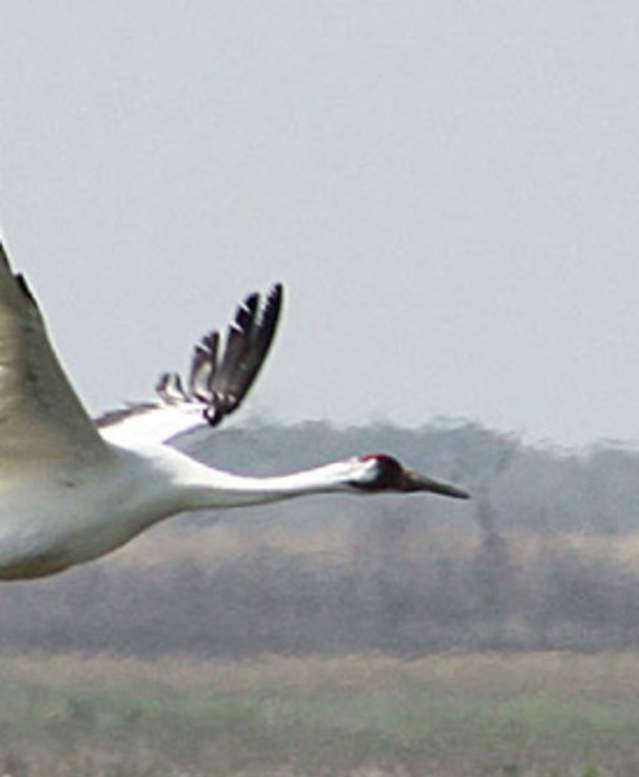Liz Smith
Sr. Research Associate, International Crane Foundation
Dr. Liz Smith is a native Texan and received her B.S. and M.S. degrees at Corpus Christi State University and Ph.D. at Texas A&M University in the biological sciences. Liz served as a Research Scientist at the Center for Coastal Studies at Texas A&M University – Corpus Christi for 17 years working with her graduate students on coastal habitat assessment and conservation planning. She joined the International Crane Foundation in 2011 as Sr. Whooping Crane Scientist and developed the Texas Whooping Crane Program initiatives and served as North America Program Director and Texas Program leader until her retirement in August 2022.
Whooping Cranes rely on large expanses of quality coastal habitat each winter within and around the Aransas National Wildlife Refuge and central Texas coast. Liz is continuing with ICF on a part-time basis summarizing long-term projects on wintering crane distribution and their response to ecological conditions and environmental changes. This information is essential in guiding the continued protection and restoration efforts by all partners along the Texas coast to support the continued recovery of this federally endangered species.
Talk: Understanding Whooping Cranes: Using Behavior Techniques to Address Conservation Needs
Once you see your first Whooping Crane (or cranes!), watching their behavior raises many questions. These might range from how they interact with each other and with other species, to why and when they are territorial, to how they respond to changes in their environment. Cranes are ideal subjects for behavior studies because of their large size and their social nature within a bonded pair, family group, and subadult cohorts. While scientific studies often customize the various categories, one can begin with the basic five: foraging, alert, social, comfort, and locomotion. In this workshop, International Crane Foundation staff will begin with an introduction of the behavior terms, crane morphology, and life history stages; then progress into guiding smaller groups in interpreting crane behavior using interactive videos of wintering Whooping Cranes. You will emerge from this experience ready to make your own observations, and understand when a crane is performing behaviors essential to their well-being, and when they are confronted with disturbance that could lead to detrimental changes in their condition.

